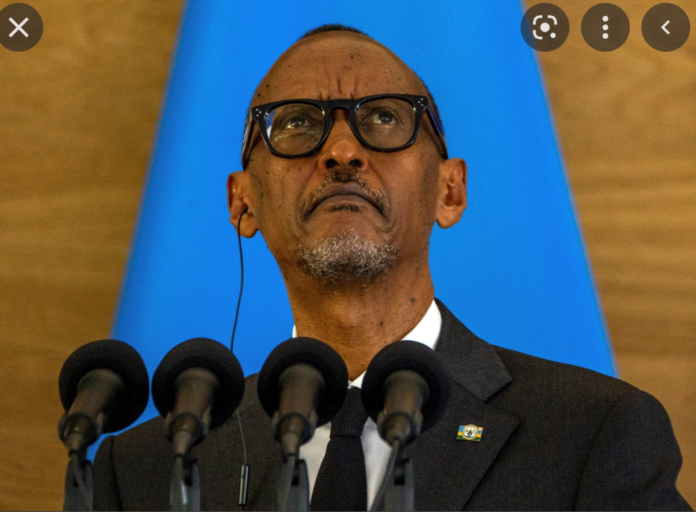A fertiliser boom is breaking out across Africa as calls for food security gain momentum amidst a widespread continental food crisis.
With an estimated 346 million people on the continent negatively impacted by a severe food crisis, according to the Food and Agriculture Organisation (FAO), the use of fertilisers has become more central, even as environmental and green farming activists call for caution.
The global production of fertilisers is responsible for around 1.4 percent of annual CO2 emissions, and fertiliser use is a major contributor of non-CO2 greenhouse gas emissions, according to Carbon Brief.
World consumption of the three main fertiliser nutrients, nitrogen, phosphorus expressed as phosphate, and potassium, is estimated to have surpassed 186 million tonnes, up by more than 1.4 percent since 2015.
That said, Africa has barely used fertilisers. Only six percent of Africa’s cultivated land is irrigated, and the average fertiliser consumption in sub-Saharan Africa is estimated at 17 kilograms of nutrients per hectare of cropland, according to the Alliance for a Green Revolution in Africa (Agra).
That is only a drop in the ocean when compared with a world average fertiliser consumption of 135kg/ha. At the just-ended AGRF Summit in Kigali, Zimbabwe’s President Emmerson Mnangagwa urged Africa to increase fertiliser use, irrigation, and thermal power in order to ensure food security. “I recently inaugurated a fertiliser plant in my country… and I for one would not abandon thermal power,” he said, much to the amusement of the audience at the Kigali Convention Centre.
Cost for going green.
“We have all the resources necessary to ensure food security for our countries and all the inputs for fertilisers security. Africa must be allowed a reasonable transition, but if they [international green energy agencies and governments] want us to leapfrog to their level, they must pay the cost.”
Zimbabwe, which suffered a failing economy and sanctions imposed by Western powers for two decades, now offers a rare example on food security policies and programmes. For example, with multiplied irrigation and fertiliser use, the country has increased its wheat production from a three-month supply to a 15-month supply, according to the country’s Ministry of Agriculture.
“So the wheat crisis emanating from Ukraine does not affect us now,” President Mnangagwa said.
“Our wheat came from Ukraine and our fertilisers from the Russian Federation. We have introduced a model that says that we need to have food security by exploiting domestic resources, and we have solved that big problem.”
Magic bullets?
Much as there is no single silver bullet to make Africa self-sufficient in food and cease to be a net importer, fertiliser use and irrigation are touted as key tools. But such projects cannot happen without good leadership.
Enock Chikava, the director of Agricultural Development at the Bill and Melinda Gates Foundation, says that “trial and error” farming — which is practised across Africa — is not sustainable.
He argues that leaders across sub-Saharan Africa are largely to blame for not adopting the so-called “green revolution of Africa.” “If there is anything close to being a silver bullet that guarantees food security in Africa, it is good leadership. We can outsource technology but we cannot outsource good leadership. ‘‘We need leaders who understand the need to prioritise modern agriculture and deliver the Green Revolution,” he said.
Tanzania is among those that have acted fast. The government introduced a three-year programme that will see the construction of dams for irrigation in each of its regions – to cover an area of up to 360,000 hectares.
The country is also constructing a second fertiliser plant – expected to be completed by the end of 2022 – to benefit the 65 percent of its population that is engaged directly in farming.
“Productivity in agriculture in Tanzania has remained low due to low technology and limited use of fertiliser. We still depend on the vagaries of weather…we still have huge post-harvest losses to the tune of 30 percent,” Philip Mpango, Vice President of Tanzania said.
Chilli bucks in Rwanda.
“But we now have a fertiliser factory under construction and soon we shall have two, to cover up for the deficit in fertiliser use.
We also increased our budget allocation to agriculture from an average of around $125 million per annum to $404 million, targeting research, irrigation, seed multiplication, and training.”
Rwanda President Paul Kagame, however, sees the possibility for greater diversity in African agriculture.
He argues that Africa has enough biomass and resources to shift to organic farming and stop being too exposed to external shocks. “The food crisis is a serious one and in order to deal with it we need to develop a sense of urgency…to treat food like a business,” he said during the AGRF summit. “If you look at the crisis in Ukraine, the whole of Africa suffers because we cannot get wheat or fertiliser. All these are lessons we should learn from, but these lessons have been here for a long time. We need to act quicker.”
Rwandan chili farmer Diego Twahirwa has benefitted from agribusiness. In 2019 he signed a $500 million deal to supply 50,000 metric tonnes of chili annually to a Chinese firm, GK International. Twahirwa’s company, Gashora Farm, also exports chili products to Europe. “I have now expanded into Zimbabwe, where we have about 2,000 hectares to grow chili in partnership with a Zimbabwe company,” Twahirwa told The EastAfrican. “At our Gashora Farm, we use modern farming technology, and irrigation and fertilisers to ensure that the effects of climate change do not affect us much. It may not be easy at the start but eventually, agribusiness pays off massively.”
Rwanda targets to reach agricultural exports of $1 billion, up from $465 million made in 2018/2019.








